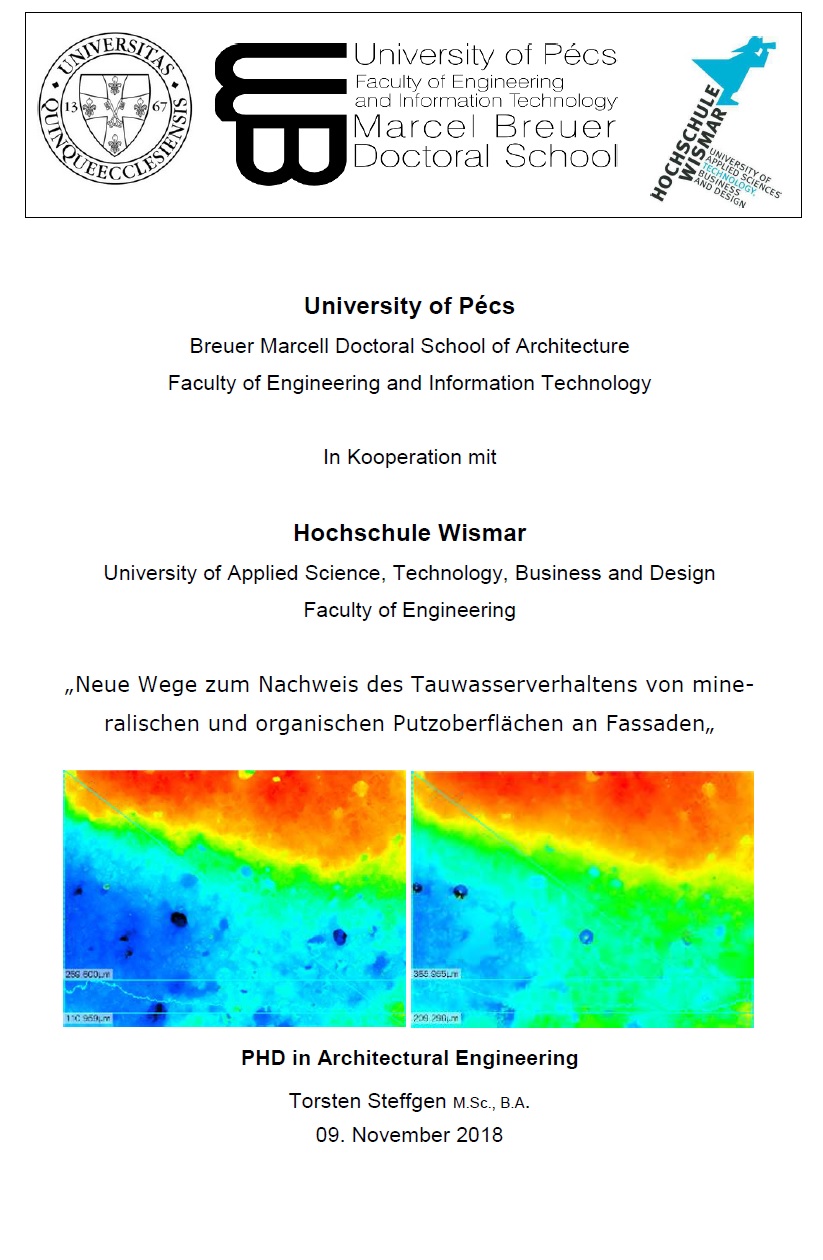Neue Wege zum Nachweis des Tauwasserverhaltens von mineralischen und organischen Putzoberflächen an Fassaden
Abstract
In recent years, both in new constructions as well as in renovation of building stock,
more and more plastics have been used in façades, for example for thermal
insulation to reduce energy loss. Thermal insulation of buildings is becoming
increasingly important for the architect and energy designer in reducing greenhouse
gas emissions.
The United Nations Environment Programme found that buildings consume about
40% of global energy. Many scientists who research on new building energy design
are in favor of passive houses to reduce carbon dioxide emissions.
The trend is towards an increased use of synthetic material for the insulation as well
as for plasters and paint coatings. Scientists have analyzed the complex range of
problems of algae growth relating to the condensate load on façade. Further scientific
research discovered that the condensation time is more than 10 times higher than the
rainwater time.
This investigation allows the conclusion to be drawn that moisture films on the
surface of the components are one of the main factors for the growth of algae. Today,
scientists use static measurement methods to determine the actual amount of
condensation directly on the surface by means of a fleece and a spring balance. In
my own experiments, I also detected differences in various climate and locationdependent
factors. A standardized recording method might help to make
measurements more comparable.
Some manufacturers try to prevent algae growth on plaster and paint with targeted
biocides (encapsulated or non-encapsulated). Biocides are chemical or biological
substances used in Germany and Switzerland specifically to protect coatings and
plasters against microbial degradation or algae growth. These agents do not remain
in the façade but can be washed out by rain and enter the groundwater and drinking
water. The leaching of active substances contained in biocides from plasters and
paints have already been investigated and scientifically proven.
Biocides are only effective in the façade matrix and only in their aqueous phase, in
which they reach the target organisms. These biocides are washed out of the plaster
each time it rains or condensation occurs. They then enter the sewage system or
groundwater.
The development of an exemplary representation for the future planning of moisture
behavior of façades is a physical challenge. A model used to derive new and known
3
parameters for condensation protection on a façade should improve condensation
protection in the future.
Materials science studies can offer further information to expand the capacity of
different cleaning properties. A sustainable ecological design can yield additional
findings regarding surface protection without biocides.
Physical protection measures are to be preferred, because, unlike biocides, they
have no immediate impact on the environment.

